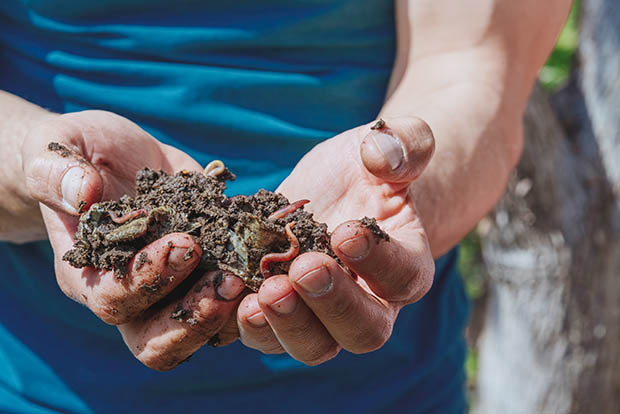How wiggly worms can help you assess soil health

One thing New Zealand isn’t short of is worms: the country has nearly 200 native earthworm species alone, although they mostly live in forests.
Words: Nadene Hall
The three types of earthworms found in agricultural soils are mainly introduced ‘exotic’ species.
These worms can help you find out if you have good soil. The right number of all three indicates a biologically healthy soil with good levels of organic matter and moisture, the right pH, and thriving micro-organisms such as ‘good’ bacteria, protozoa, and fungi.
THE 3 TYPES OF WORM YOU WANT TO FIND
1. Dung (epigeic) earthworms: live near the surface, feed on organic matter such as dung, red in colour, fast-moving.
2. Topsoil (endogeic) earthworms: move through the topsoil, form semi-permanent burrows, usually grey but colours vary.
3. Deep-burrowing (anecic) earthworms: larger than other worms, create burrows, feed on organic matter, then take it deep into the soil, big reddish heads.
COUNTING WORMS
If your soil is biologically healthy, it will have around 400 individual worms per square metre, with all three types of worm present.
To count worms, the Great NZ Earthworm Survey recommends:
• Take samples over winter-spring, when soil is wet and earthworms are most active.
• Dig out three samples that are three spade squares in size – 20cm x 20cm, by 20cm deep.
• Lay the samples on a large plastic sheet and pull apart – place any worms in a container of water.
• Use its datasheet (available for free at the link below) to identify the adult earthworms – they’ll have a ‘band’ on their body (young earthworms don’t have a band).
Ideally, each sample will contain more than 16 earthworms, with a mix of each group.
Love this story? Subscribe now!
 This article first appeared in NZ Lifestyle Block Magazine.
This article first appeared in NZ Lifestyle Block Magazine.
